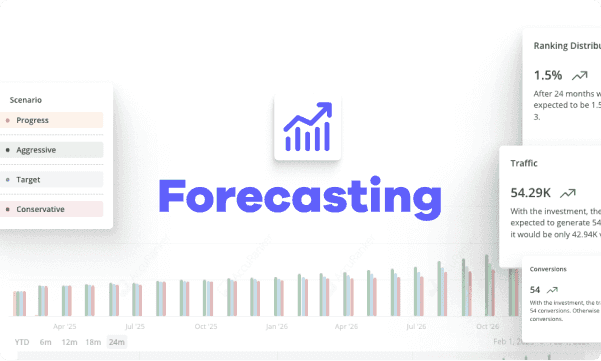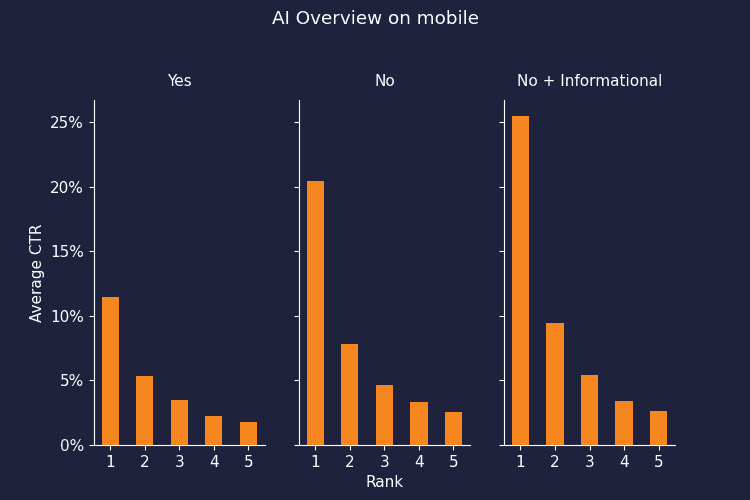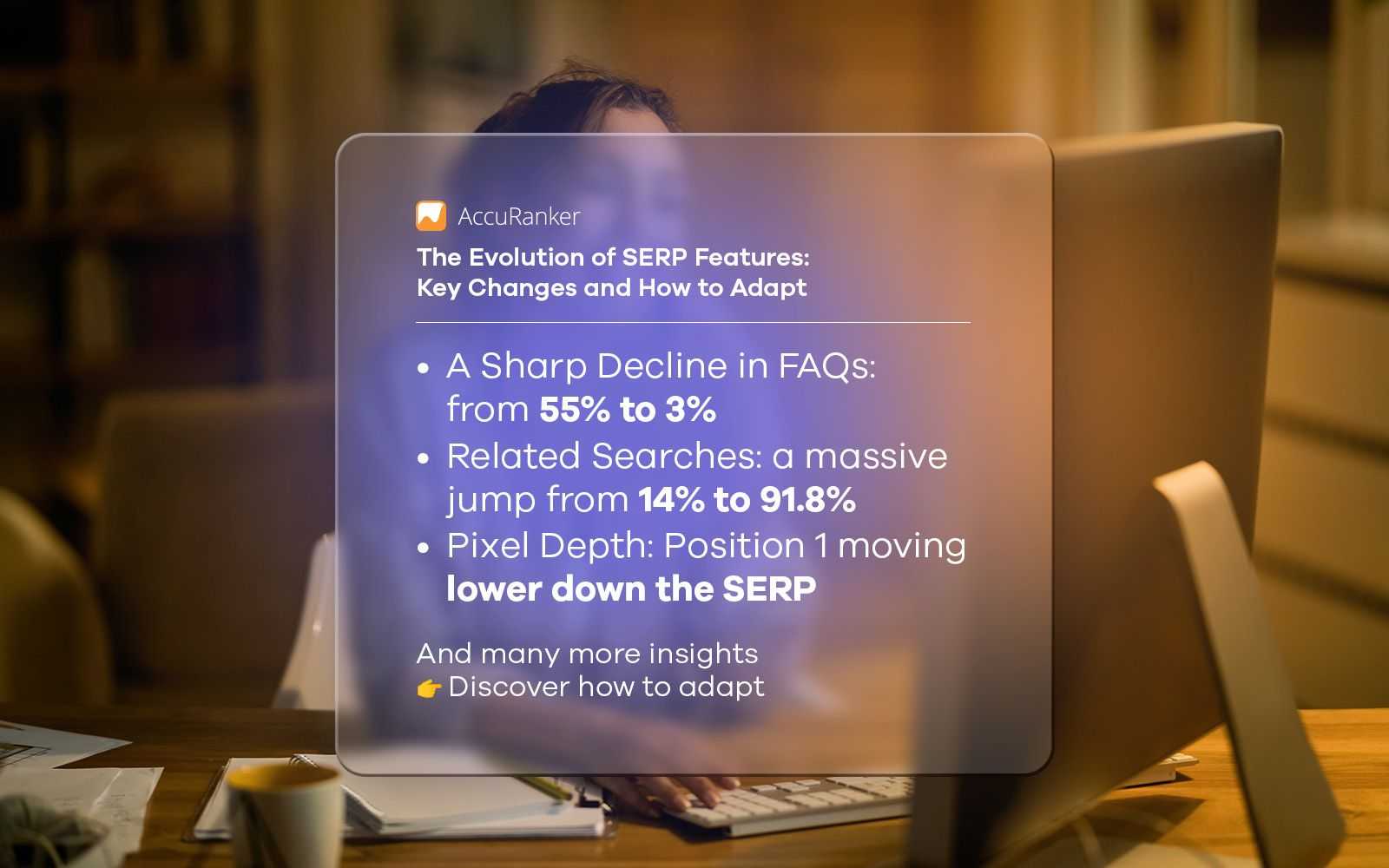How To Create A Content Marketing Strategy For A Niche Audience
Last updated on Monday, October 9, 2023

Picture this: You've just started a small business selling special teas, but sales are slow. Now imagine that same tea flying out of your shop - all because you figured out how to talk to a special group of "tea lovers." That's the power of focusing on a 'niche' audience.
But targeting the right people is only part of the equation; you also need to know how to talk to them. This is where a solid content marketing strategy comes into play. According to research by HubSpot, 82% of marketers are actively investing in content marketing. Moreover, 40% of B2B marketers have a documented content marketing strategy.

So, it's not just about finding your audience; it's about effectively engaging them to stay ahead of the competition. Today, in this article, we will outline a step-by-step guide to help you create a content marketing strategy for a niche audience.
Let's dive in!
What Is A Niche Content Marketing Strategy?
A niche content marketing strategy is a data-driven approach that aims to engage a highly specialized audience by delivering bespoke content that resolves their distinct challenges and needs.
Unlike broad-spectrum strategies, niche content marketing serves a hyper-focused demographic, thereby allowing businesses to position themselves as industry thought leaders.
How Does Marketing To A Niche Audience Differ From Marketing To A Broader Audience?
Marketing to a niche audience necessitates an in-depth comprehension of industry-specific issues and customer pain points. On the other hand, marketing to a broader audience adopts a one-size-fits-all approach that leans towards mass appeal. Here’s how marketing to a niche audience differs from marketing to a broader audience:
Customer Retention vs. Acquisition: In niche markets, the focus generally shifts towards customer retention and lifetime value, given the smaller market size and the acute need for specialized solutions. In contrast, broader marketing campaigns concentrate more on customer acquisition, often requiring a larger financial outlay due to increased competition.
Tailored Messaging: When targeting a niche, the content must be precisely aligned with the audience’s unique needs, using targeted channels for communication. Broader audiences, however, can be reached through more mainstream platforms, although the messaging will likely be less personalized.
ROI Considerations: Niche marketing strategies often yield a higher ROI, as the focused targeting and specialized content significantly enhance customer engagement. Meanwhile, broad campaigns spread the budget thinly over a diverse audience, leading to diluted impact and potentially lower ROI.
For instance, in the B2B realm, a general marketing strategy for software companies might aim at all types of businesses needing software solutions. This could include everything from inventory management to customer relations tools. However, a niche strategy might focus solely on software solutions for healthcare providers—addressing needs like patient data security and telemedicine capabilities.
Create A Niche Content Marketing Strategy in 6 Simple Steps:
Understand Your Niche Target Audience
Identifying your target audience is the cornerstone of any effective content marketing strategy. To understand your niche target audience, ask yourself these questions:
What problem are you solving?- Determine the specific problem your product/service is solving
Who experiences this problem most acutely? (Demographics) - Age group, Profession, Gender, Location, Income level, Education
What are their pain points or challenges?
What do they like? (Psychographics)- Interests, Passions, Preferences or Lifestyle choices.
Where do they hang out online- Social media platforms, Forums, Online Communities
How do they consume content?- Blogs, Podcast, Webinars
Who are your competitors targeting?
By considering these questions, you can create ideal customer personas that speak directly to your niche audience, establishing a strong connection and fostering brand loyalty.
For instance, imagine you're a B2B SaaS company specializing in project management. Your ideal customer persona might look something like this:
Job Title: Operations Manager
Reporting Line: Reports to COO and CEO
Age: 30-45
Needs: Seeks a comprehensive project management tool that can integrate seamlessly with existing systems and adapt as the company grows.
Key Priorities: Customizability, user-friendly interface, robust reporting capabilities, and real-time collaboration features.
Understanding this persona will guide you in crafting content that resonates, providing solutions to the specific challenges and needs of Operations Managers in similar organizational settings.
Set Clear Objectives For Your Content Marketing Strategy
Setting clear objectives is crucial to ensure that your efforts align with the specific needs and preferences of your identified niche target audience. 46% of content marketers leverage content marketing to attract more traffic to their websites.

However, driving traffic and conversions is one objective. You might want to:
Boost your brand awareness
Position yourself as an authority in your niche
Build engagement and community of loyal followers
Generate quality leads
For example, my objective behind publishing these blogs is to drive traffic to my website and build engagement among my community of readers.
To achieve these objectives more efficiently, you might consider seeking the help of AI consulting services. These services can analyze complex data patterns and provide insights that can guide your content marketing strategy, ensuring that your content resonates well with your niche audience.
It goes without saying, make sure the objectives you set fit within the SMART (Specific, Measurable, Attainable, Realistic, Timebound) framework.

Source: Coschedule
SMART goals bring structure and tractability to your content marketing strategy, elevating it from vague ambitions to a structured plan of action with clear criteria for success.
Research Niche Keywords For SEO
Even within a niche, certain topics have higher search potential than others. This is where keyword research is of paramount importance. More than 70% of B2C marketers use keyword research for SEO as part of their content creation process. But how do you research niche keywords for SEO?
To find out niche keywords, understand the intent behind your audience's search queries by putting yourself in their shoes.
You can start by brainstorming topics, terms, and jargon that your target audience is likely to use when searching for solutions to their problems. Then, go to keyword research tools like Google Keyword Planner or Ahrefs to find more related keywords, questions and phrases for the seed terms.

The tools also help you identify which keywords your competitors are ranking for. Pay special attention to those that overlap with your target niche.
It is also crucial to analyze the search volume and competition level for your chosen keywords to assess their potential. If you find a high search volume and low competition for a keyword, it suggests a good opportunity to create content specifically catering to your niche audience.
Optimize Content For SEO
Once you have a list of potential keywords, understand the user intent behind them to optimize your content for SEO. Understand and analyze each keyword by asking:
Are people looking for information,
Are they looking for a solution to a problem, or
Are they ready to buy?
Based on this, tailor your content accordingly.
Create Content That Resonates With Your Niche Audience
81% of marketers consider content to be an integral part of their business strategy. However, crafting content that resonates with a niche audience requires a well-thought-out plan. A shotgun approach—spraying content everywhere and hoping something sticks—won't work here. According to Alex Jasin, Founder and CEO of content marketing agency X3 Digital, here’s how to go about it:
Consider the various content types and formats available: Blogs, Videos, Infographics, Case Studies, Podcasts, User-Generated content, Interactive Content, Newsletters etc.
Make a well-planned content calendar that aligns with your key business goals, seasonal trends, or events relevant to your niche. It helps you prepare in advance and post consistently.
Next, be realistic about your content creation capabilities. Whether it's blog posts, videos, or podcasts, know how much high-quality content you can consistently produce. For niche audiences, quality trumps quantity every time. Better to create one exceptional piece of content a week than mediocre daily posts.
Last but not least, prioritize content types depending on what format is popular with the niche audience. If the audience likes to listen to podcasts, it makes sense to prioritize podcast content compared to written blogs.
Consider the example of Slack, a leading player in B2B Communication Platform. Slack knows that its audience consists of businesses that prioritize seamless communication and team collaboration. Thus, it employed best practices for content marketing by focusing their strategy on blog posts offering productivity tips, how-to guides for remote work, and webinars about team collaboration best practices.

There's one more tip from the book 'Content that Converts.' You should also find which types of content you enjoy producing. If, for example, your niche consumes information in video format and blogs, but you dread making videos, or they take way too long, and instead, you enjoy writing blogs, then focus on the blogs.
Your audience will sense that you enjoy doing them because they will probably be better in quality, too. So, find the match between where you're good at, what you enjoy, and what your audience is looking for.
Choose The Right Platforms/Channels To Distribute Your Content
When you've crafted content that resonates with your niche audience, the next vital step is getting it in front of them. Distribution is as important as creation, but the 'where' and 'how' can be tricky.
Here’s what you should consider:
Where does your niche audience are most active? If they frequent specialized forums or specific social media groups, those are the places to focus your distribution efforts.
If your niche values discussions, platforms that allow comments, reviews, or community contributions should be part of your strategy.
Different platforms are suited for different types of content. Instagram might be great for visual storytelling, while Medium or a personal blog could be more suitable for in-depth articles.
Popular Content Distribution Platforms To Consider For Your Niche Audience:
LinkedIn: Best for B2B businesses, professional services, and thought leadership.
Instagram: Suitable for lifestyle, fashion, and food niches where visual storytelling is key.
Pinterest: Good for DIY, crafts, and any niche where visual inspiration and how-to guides are popular.
Reddit or Niche Forums: Perfect for hyper-focused audiences who crave deep discussions, e.g., tech enthusiasts, and hobbyists.
Email Newsletters: Direct line to your most engaged audience members; works for nearly all niches if done correctly.
Note: With a niche audience, you only need to hone in on the few marketing channels they’ll see and be receptive to. However, you can choose to tap on your audience on multiple platforms simultaneously through multistreaming.
ROI, then, will be inevitably easier to track because of the similarities in a niche audience’s purchasing power.
When working with a niche audience, the trick is to re-allocate your marketing budget so that you’re doubling-down on the marketing channels that will reach them.
Analyze Your Results (Track Important KPIs)
You've set clear goals, produced niche-specific content, and chosen the right platforms to reach your target audience. Now, it's crucial to measure the effectiveness of your efforts.
The fact that numbers are smaller due to the niche shouldn't scare you away from knowing your content is making an impact. Although you might get fewer eyes on your content due to your niche, you're almost certain that the eyes on your content are the right eyes.
Key Performance Indicators (KPIs) You Shouldn’t Ignore:
Engagement Rate- Likes, shares, comments, and other interactions.
Traffic and Page Views- A sudden spike or a consistent increase in traffic indicates that your content is hitting the mark.
Lead Generation and Conversion Rates- Signing up for a newsletter or making a purchase? This is crucial for measuring ROI.
Customer Lifetime Value (CLV)- How much value each customer brings in the long term.
Customer Retention Rate- High retention rates indicate that your content not only attracts but also sustains interest.
SEO Rankings- Track keyword ranking with Accuranker Keyword Rank Tracker and check how well your content is performing in search engines.
Cost Per Acquisition (CPA)- The cost to acquire each customer helps you refine your budget allocation.
In a niche market, even minor tweaks based on these analytics can lead to significant improvements, making your content marketing strategy much more effective.
Key Takeaways:
Creating a content marketing strategy for a niche audience is a nuanced task, but the rewards are worth it. By understanding your specific target group, setting SMART goals, choosing the right content types and platforms, and rigorously tracking your KPIs, you can craft a strategy that not only resonates but also converts.
Remember, in a niche market, smaller numbers often mean a more engaged and dedicated audience. So don't wait; the perfect time to fine-tune your niche content marketing strategy is now.
Take the first step today, and watch your engagement and conversions soar!

Article by:
Aryan Jalan
SEO Consultant
Aryan Jalan, a professional SEO consultant boasting five years of expertise, is dedicated to driving marketing success for businesses. An avid learner, he blends work with leisure, exploring books and new destinations.


